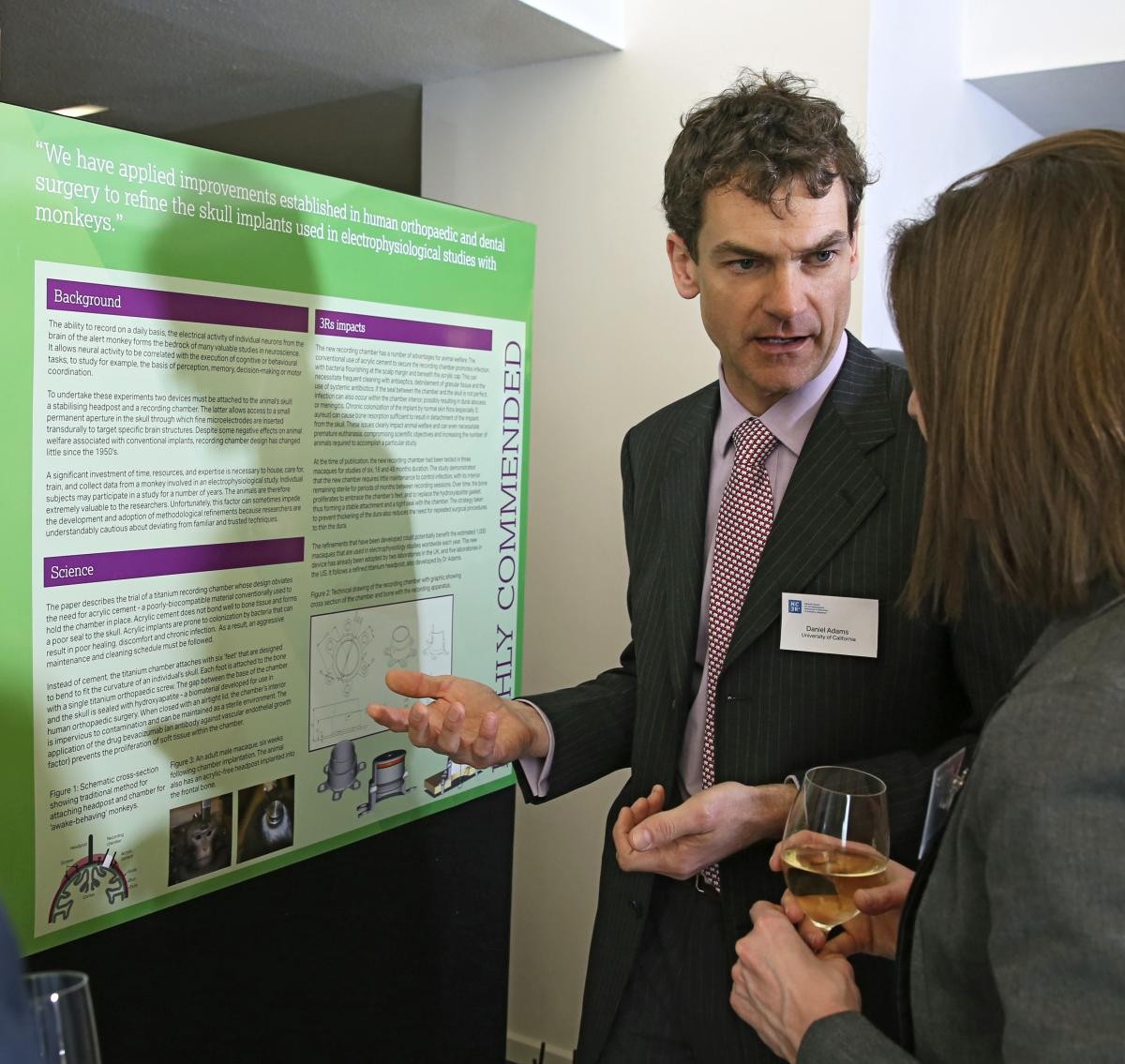Sharing refinements of chronic implants

Dr Daniel Adams (pictured below), University of California San Francisco, describes the latest resource from the NC3Rs aimed at refining neuroscience experiments using non-human primates – the Chronic Implants Wiki – and why a wiki format was chosen.
The ability to ‘listen-in’ on the electrical activity of individual cells in the brain as it performs sensory, cognitive, and motor functions has yielded a multitude of important discoveries in neuroscience. This approach is often applied in non-human primates, like the macaque, because they have a similar neuroanatomy to humans and share many of our neurological processes. They can also be readily trained in behaviors that specifically exhibit the brain function being studied.
To sample the firing patterns of an individual neuron it is necessary to place a fine conductive microelectrode close to it. Since brain tissue lacks sensation, recording electrodes can be inserted without causing discomfort. This is achieved via specialized implants that are attached permanently to the skull under general anaesthetic. Separate implants are also required to stabilize the animal’s head during recording sessions. The performance of these chronically implanted devices is pivotal to both the welfare of the animals and the success of experiments. For this reason, their design has evolved considerably since the technique’s inception in the 1950s.
In recent years, advances in medical technology and engineering have further driven refinements in the design of implant hardware and the methodology surrounding its use. A good example of a technology-driven refinement in this field is the use of computer-controlled machining systems that custom-shape implants from MRI data, so that they fit perfectly onto the surface of each individual animal’s skull. The NC3Rs has played an important role in encouraging innovation in this area, through workshops, research funding and prizes. My own research to develop a biocompatible recording chamber was recognized by the NC3Rs in 2013.

It is in scientists’ best interests to adopt methodological refinements that improve animal welfare, reduce technical complications, and increase the volume and quality of data that can be collected from every animal. However, potential improvements can carry with them an element of risk. The preciousness of animals and of experimental data can discourage scientists from straying too far from ‘tried-and-tested’ techniques. For example, a new material with improved tissue compatibility for use in implant manufacture might unforeseeably weaken over time, shortening the implant’s usable life. It is important that experiences of this nature are shared so that repetitions of flawed approaches are avoided, and verified improvements are adopted.
Scientists are eager to share their discoveries in peer-reviewed journal articles; research papers are considered to be the currency of science. Unfortunately, improvements in methodology are rarely given the same priority. This may be because methods papers seldom have as much prestige as original research publications. Furthermore, the traditional format of peer-reviewed manuscripts consisting of Methods, Results, and Discussion, is not ideally suited to the description of refinements in techniques. A few journals specialize in publishing novel methodology, but they do not accept reports of incremental refinements to established techniques. A more open and immediate form of communication would serve the scientific community better. This could take the form of a forum, where scientists could quickly and easily post descriptions of their methodological refinements, receive feedback, and field technical questions.
In response to this need, the NC3Rs has developed the Chronic Implants Wiki (www.ciwiki.net). It provides a secure platform where scientists, veterinarians, and animal care staff can share practical information on a broad range of technical refinements, no matter how incremental. Like the well-known Wikipedia, the CIwiki relies upon contributions from registered users, but unlike Wikipedia, its pages are visible only to authenticated individuals. The time and effort required to publish to the wiki is substantially less than authoring a peer-reviewed manuscript and the content can be edited continuously.
The wiki is a novel approach within the field and has the potential to benefit animal welfare and scientific progress, but its success depends on the community getting involved and sharing their refinements and experiences. I would encourage all those using chronic implants in non-human primate neuroscience to register and utilize this new resource.
To register to use the wiki, complete the short form on the home page.
